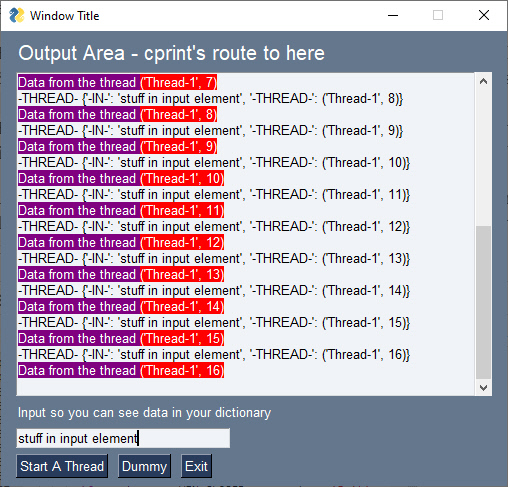Window.write_event_value
Example using Window.write_event_value
In July 2020 an important upgrade was added to the multithreaded capabilities of PySimpleGUI. Gone are the requirements to poll for incoming messages from threads. Now "events" from threads are received through the normal event loop.
The technique has several benefits including:
- Efficiency - Polling is inefficient. Removing the polling added back a lot of CPI time
- Simplicity - Communicating between a window and a thread is a single function call,
Window.write_event_value - Encapsulation - The actual communication between the thread and the user's application is encapsulated within PySimpleGUI itself using a
queue.Queueobject.
This specific demo shows a couple of newer features in addition to the write_event_value call. It also shows how the routing of cprint calls can be accomplished by the Multiline definition itself.
Communicating Between Thread and Event Loop
The most important line of code in this entire program is this one:
This call will cause an event to be generated and is read in the event loop when the main program calls window.read().
In this example, the event that will be generated is '-THREAD-'
The values dictionary will also have an entry associated with that "key". In this call we passed a tuple with the values:
The first entry in the tuple is the name that Python assigned the thread. The second part of the tuple is a counter. You will see these values in the output window in red.
Screenshot on Windows
On windows, the output looks something like this:
